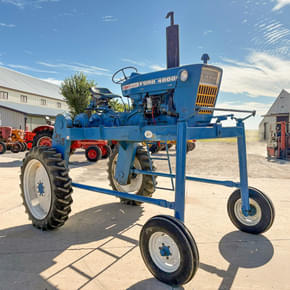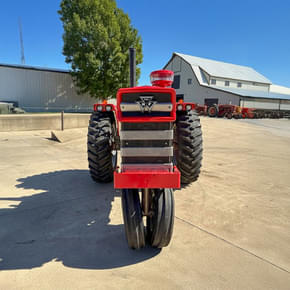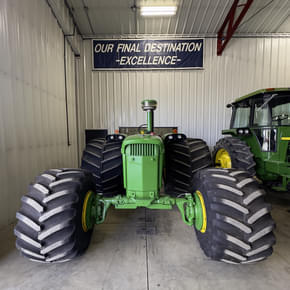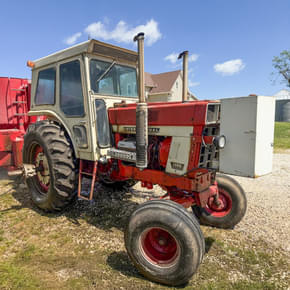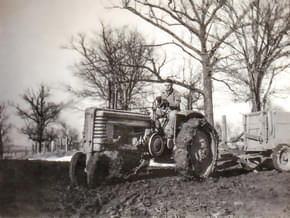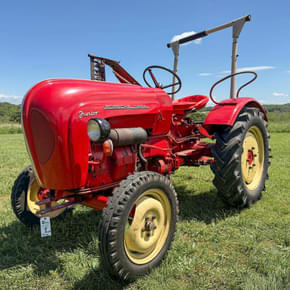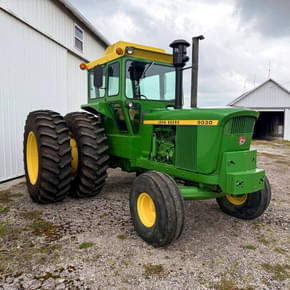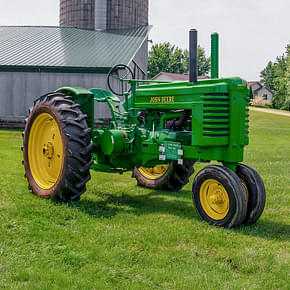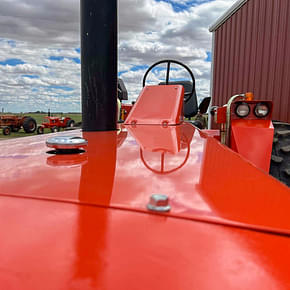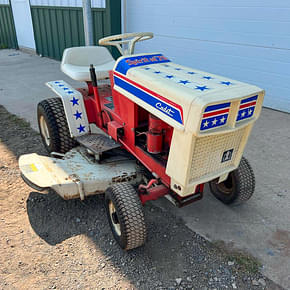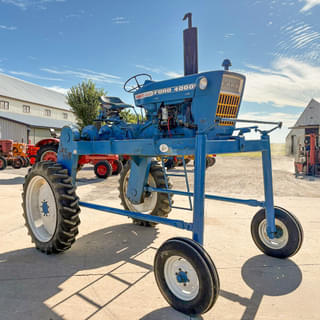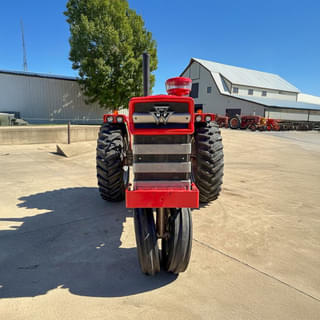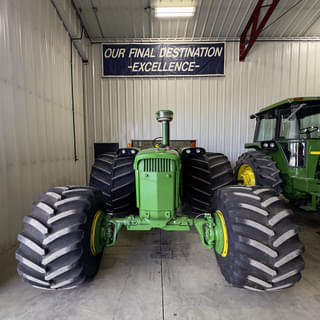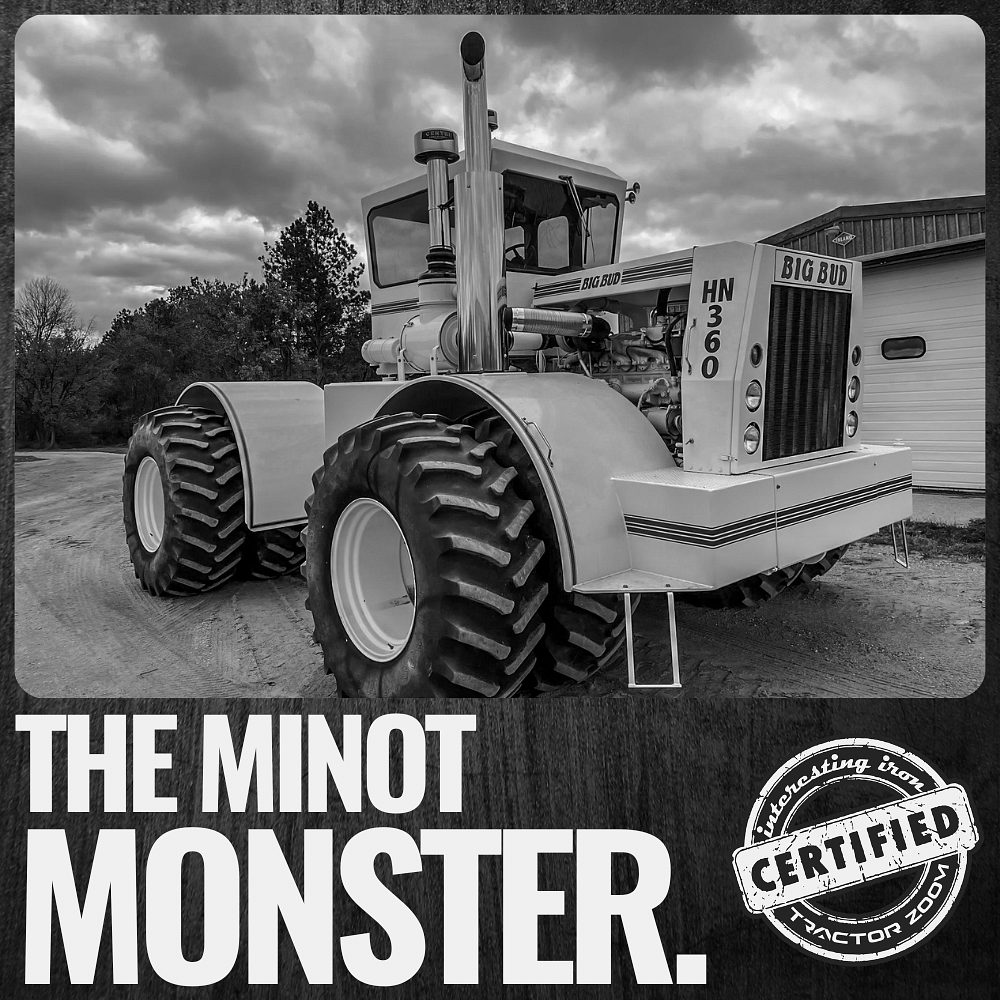
When I first saw this Big Bud HN-360, my immediate first thought was, “If I write about this tractor, Nick Welker’s is gonna be so annoyed with me after he gets tagged in it a thousand times…”
Still…it’s a Big Bud, and I think Big Buds are cool. Nick does too. We’ve talked about them a time or two together. Hopefully he’ll grant me some grace on this one…
Here’s the pertinent details on this tractor. The bidding doesn’t actually open for another three weeks, but I figured I should give everybody some advanced warning.
(Y’know, in case you need time to warm up your bidding fingers…)
Auctioneer: Swenson & Sons
Location: Minot, ND
Bidding: 12/20/23-12/27/23
1978 Big Bud HN360
We’ll get into Big Buds in a minute. First, let’s talk about the development of big 4WD tractors, because it definitely didn’t come from the midwest.
Hillside farming & 4WD development
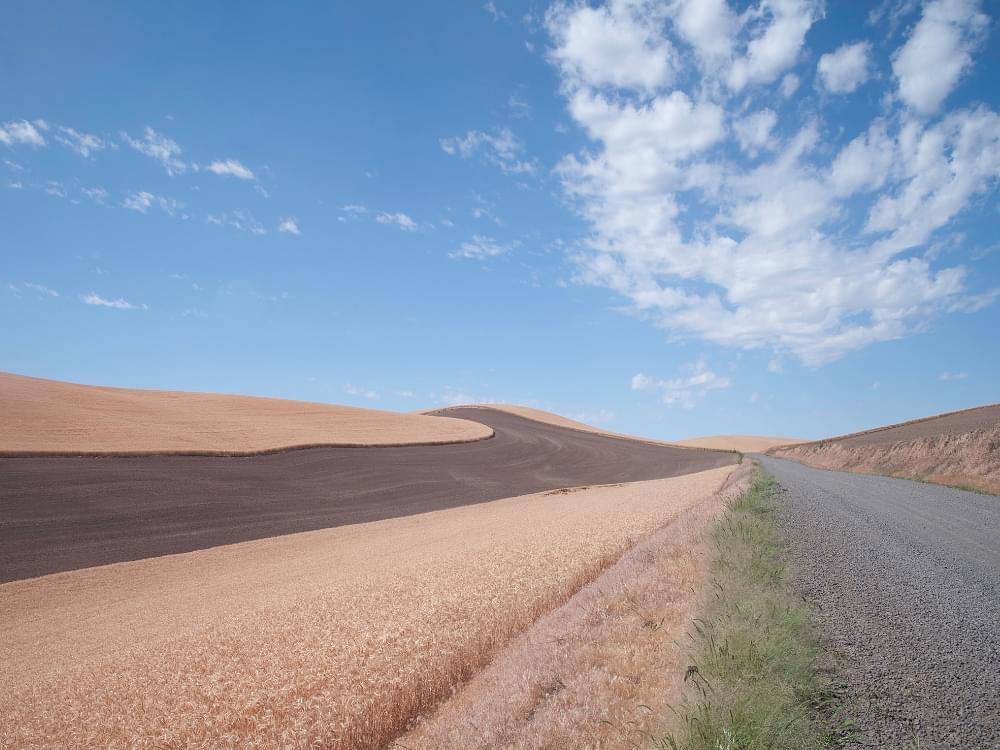
The idea for a full-time 4WD tractor came from out west, where you have to be part mountain goat to farm. The hills were way too steep for 2WD tractors. They weren’t stable enough, compacted the soil, and didn’t have enough grunt to pull big heavy implements. As a result, crawlers were used pretty extensively. Although while they were definitely more stable in the hills, they were slow and they beat the tar out of their operators because most of ’em were open-station.
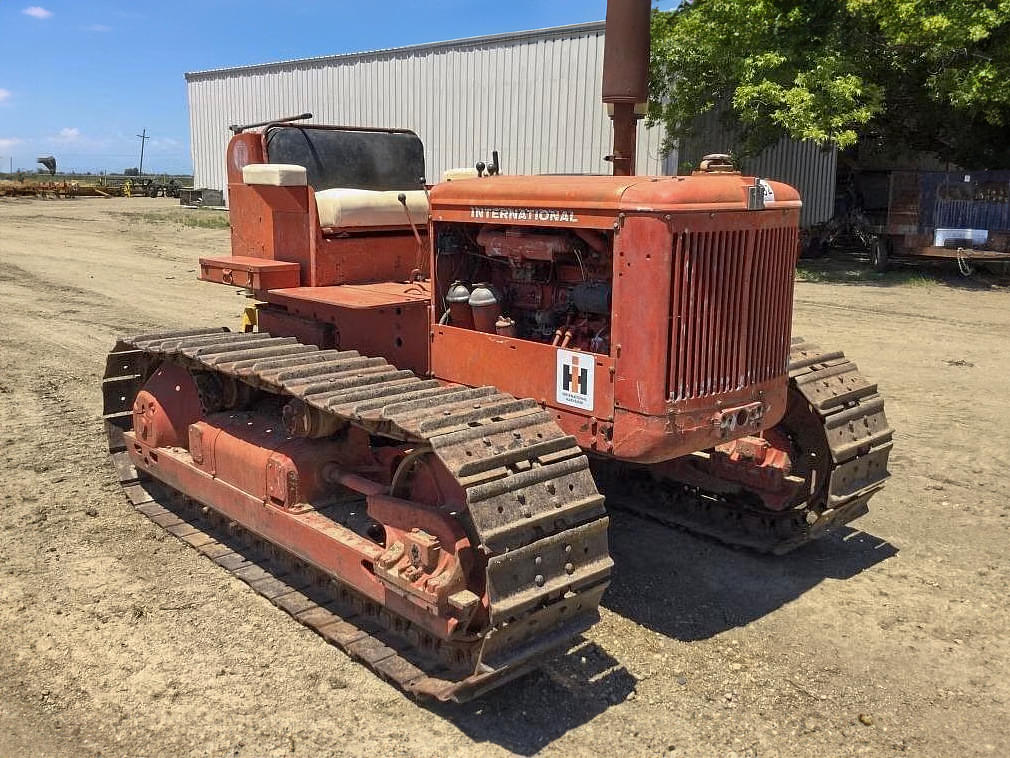
At the end of the day, they needed something better.
Further complications…
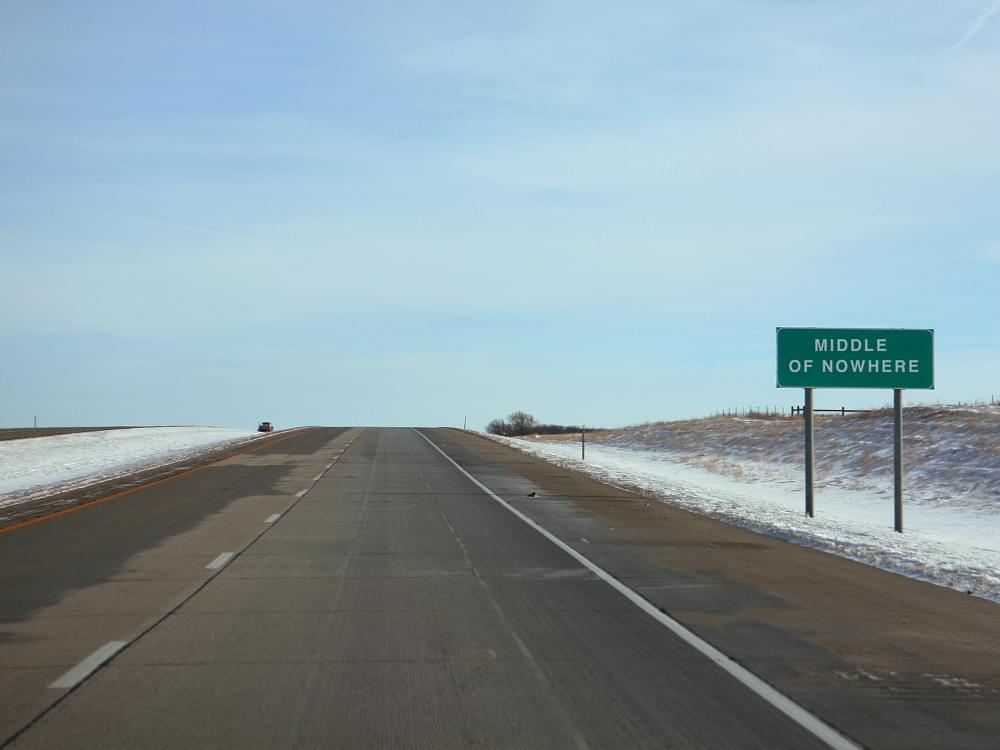
There was more to it than that, though. Dealer networks weren’t what they are now, and oftentimes farmers out west were a long ways away from a dealer who could supply parts or fix broken machines. They really needed to be able to work on their own machines when they broke, and they had to be able to get parts from anywhere.
So, companies started looking at alternatives. Eventually, most of them arrived at the same conclusion. They’d build a frame and sheet metal in-house, and then source individual components from off the shelf. At the end of the day, where were the parts that were most universally available? The trucking industry. Detroit Diesel, Cummins, and CAT (as well as a few others later on) supplied engines. Eaton-Fuller and Spicer supplied transmissions, and multiple companies provided drivelines and axles.
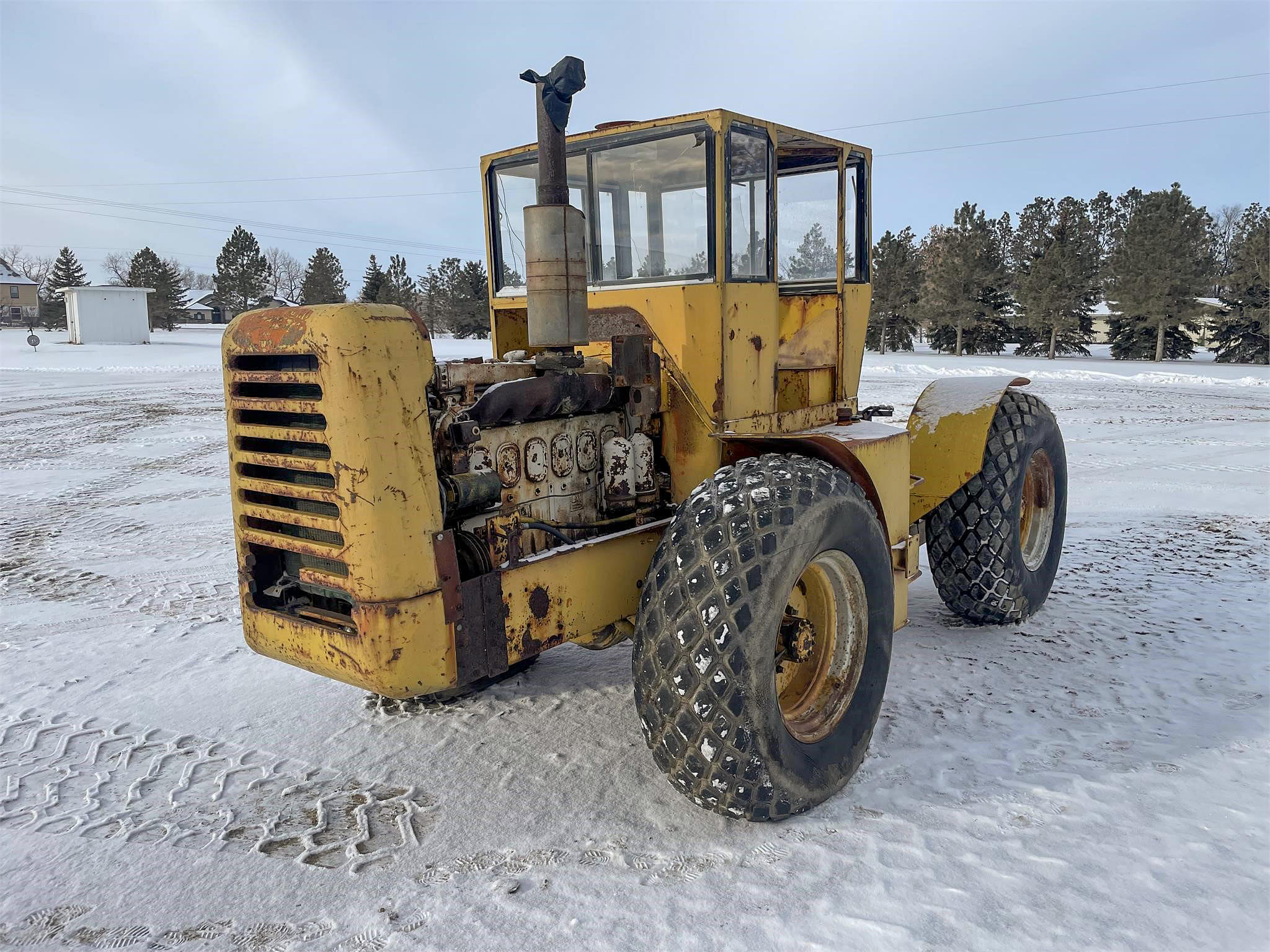
The focus was on durability and ease of maintenance, and the component formula worked very well for that. Companies like Wagner, Steiger, and Versatile pioneered those ideas – and starting in the early 70s, so did Big Bud.
Big Bud

(I’ve written about Northern Manufacturing and how they got into the business of building Big Buds in an earlier Interesting Iron article. For the sake of brevity, I won’t re-hash it all here.)
Suffice it to say, by the mid-70s, Big Buds had become pretty popular in Big Sky country and the upper Great Plains. The company had expanded their model range a little bit to meet the demand for more capability, and the HN-360 was one of the models that was introduced in 1977.
The HN-360
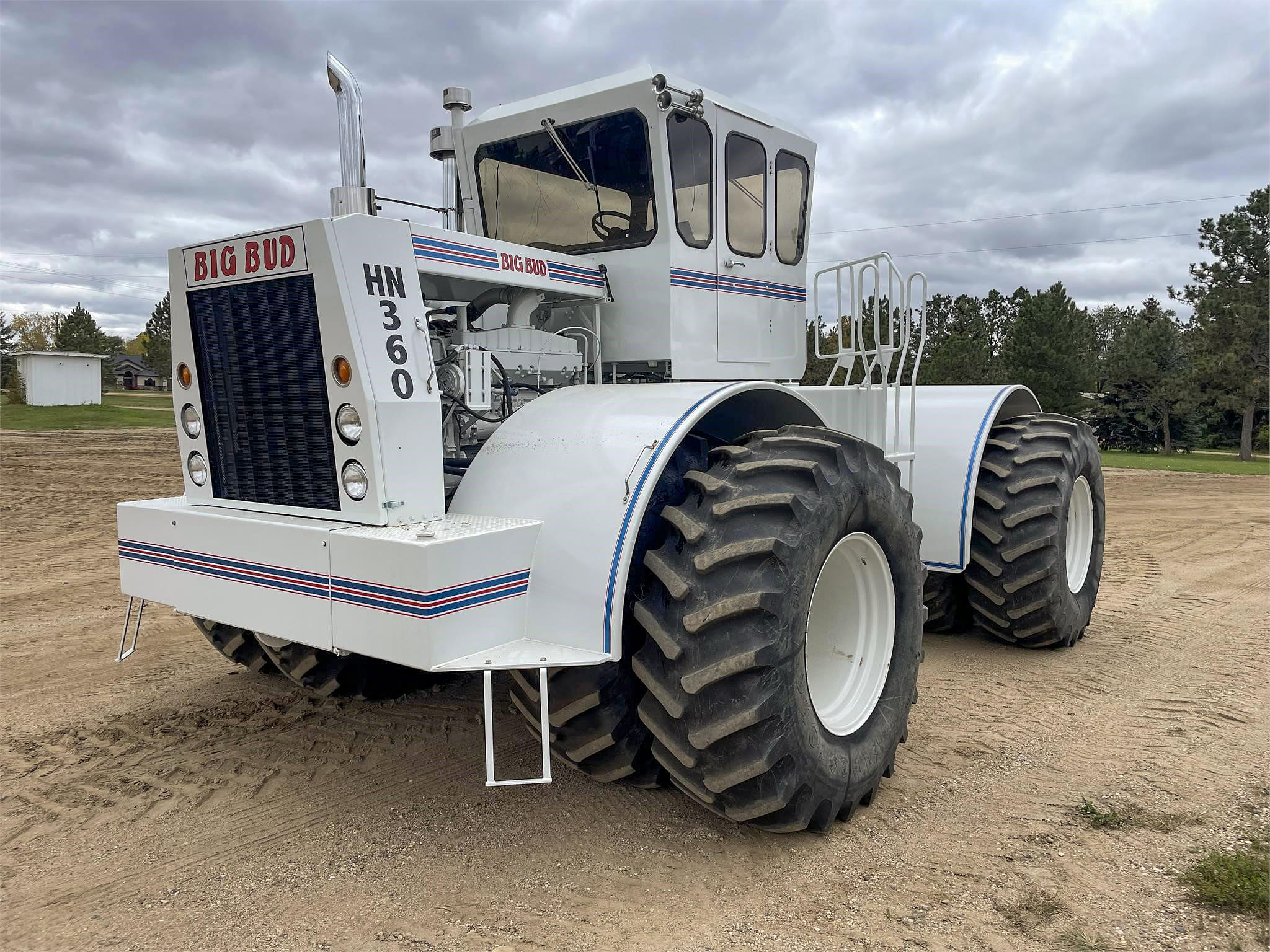
Even by today’s standards, the HN-360 is a big animal. At 40,000 pounds dry, it was a heavyweight in 1978 (and still a middleweight in 2023). It’s 22′ long, 13′ high, and 10′ wide give or take, with a 12′ wheelbase! To put it in modern terms, that’s about the size of a modern QuadTrac. The Big Bud might be an old tractor, but it’s still a monster!
The specs were fairly impressive for 1977-78. The HN-360 tractors used a 360hp 855 Cummins, and power went through a 13-speed Eaton Roadranger gearbox. Spicer provided the driveline, and the planetaries were CAT 980s.
Honestly, now that I look at it in print, I’m fairly sure you could order a Pete 359 with the same options!
I say that in jest, but honestly folks, that’s the beauty of these component tractors. The solution was so dead simple that it almost became elegant. Big Bud said, “We’ll do what we do best, and we’ll buy the other stuff from the companies that do that stuff best.”
Production
The HN-360 was only in production for a total of about two years – 1977 and 1978. I believe that when it was all said and done, a total of 28 of these tractors were built.
I know what some of you are thinking…
“Wait…what? Why was the production so low? I thought these were great tractors and they all used commercially-available guys. What gives, Interesting Iron-guy?”
The thing you have to remember is that these really weren’t “production” tractors – and that was by design. Every tractor had a customer’s name on it before it was built, and every tractor was built by hand. It’s not a practice that many companies used at the time, but Big Bud felt that they could achieve better quality this way. Furthermore, it saved them money as well, because they didn’t have the carrying costs associated with a big backstock of materials.
Big Bud was a very small company. Based on some old photos I’ve seen from 1977 when the 747 was built, there were only 23 people on the payroll! Our company is half again as big as theirs today!
Anyway, let’s talk about the Big Bud selling in a few weeks. It’s a nice one!
The Big Bud HN-360 you can buy in December…
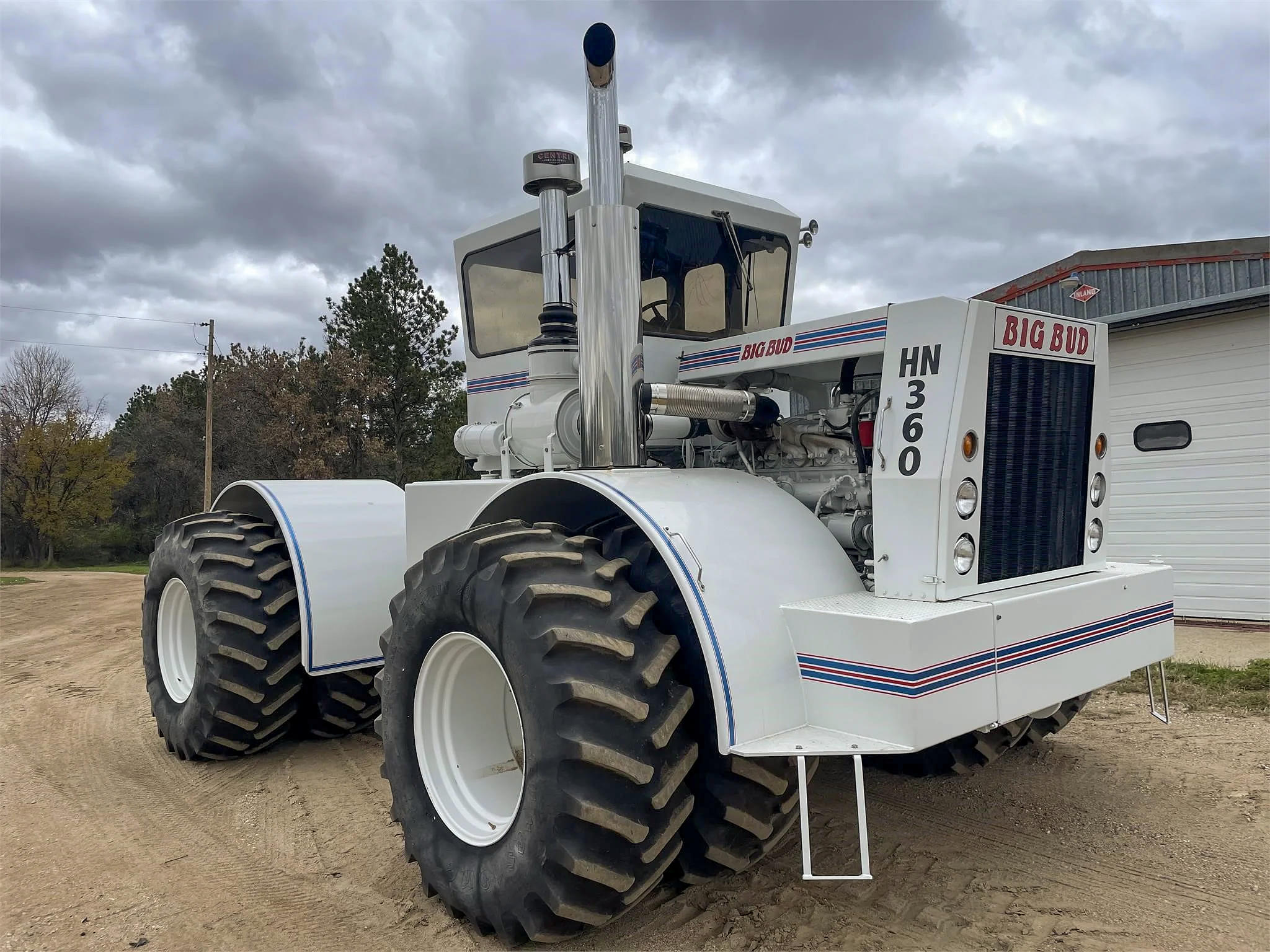
Long before Swenson & Sons joined the TZ family late last year, I’ve been following their auctions just because they sell some really neat equipment. They don’t sell things very often – usually only twice a year – but when they do, it’s pretty certain that there’ll be some cool pieces of history up for grabs.
But for as long as I’ve watched their auctions, I’d never had the chance to sit down and chat with them. So yesterday, I called Matt Swenson and asked him to tell me about this tractor. I’m really glad I did, too. He’s a great guy, and he and his brother are both passionate about this stuff.
The Backstory
As with many Big Buds, this particular one came from a farm in Montana several years ago. I believe Matt told me that it was this farmer’s big horse, but it didn’t have enough hydraulic flow to keep up with some of the equipment he wanted to run. When the farmer upgraded, Matt & Nate struck a deal, and the HN-360 came to their shop in Minot.
Right now, it’s got just over 8300 hours on a working tach. Based on the way it runs and drives, Matt believes those hours to be accurate. “It’s a great driver, Ryan,” he told me, “the center pins are nice and tight, too. I’ve been around enough of these tractors to see both good and bad, and this one is among the nicer of the Series 1/Series 2 tractors we’ve owned.”
The 855 Cummins is in very good shape, too. He told me, “It fires off right away – even when it’s cold – and behaves really well. Sometimes these engines can sound like they’re about to come apart until they’ve got some heat in them, and this one doesn’t do that. It doesn’t wet-stack or slobber all over the place, either. It just sits there waiting to go to work!”
What have they done to it?
From a mechanical perspective, not much. Basic tune-up and maintenance stuff, mainly. On the cosmetic side, though, it’s been treated to something of a makeover. When Matt bought it, the paint was very faded and the decals were sunbleached to the point where you couldn’t hardly see them. So, they sent it to a professional body shop, who did a very nice job of repainting it and placing a new set of decals on it.
One thing I thought was interesting was the choice of paint. Matt chose to use a single-stage PPG automotive paint because he likes to be as close to original as possible. “I mean, two-stage stuff looks great, but sometimes, it almost looks too nice, y’know? Like you look at it and think, ‘That tractor didn’t look that good the day they painted it at the factory!’ I guess I just prefer the factory look and feel a little more.”
Honestly, he’s right, too; some of the two-stage paint work that restoration shops are turning out these days is utterly unbelievable. I love seeing flawless paint like that, but I’ve got to admit, it doesn’t have the same feel to it.
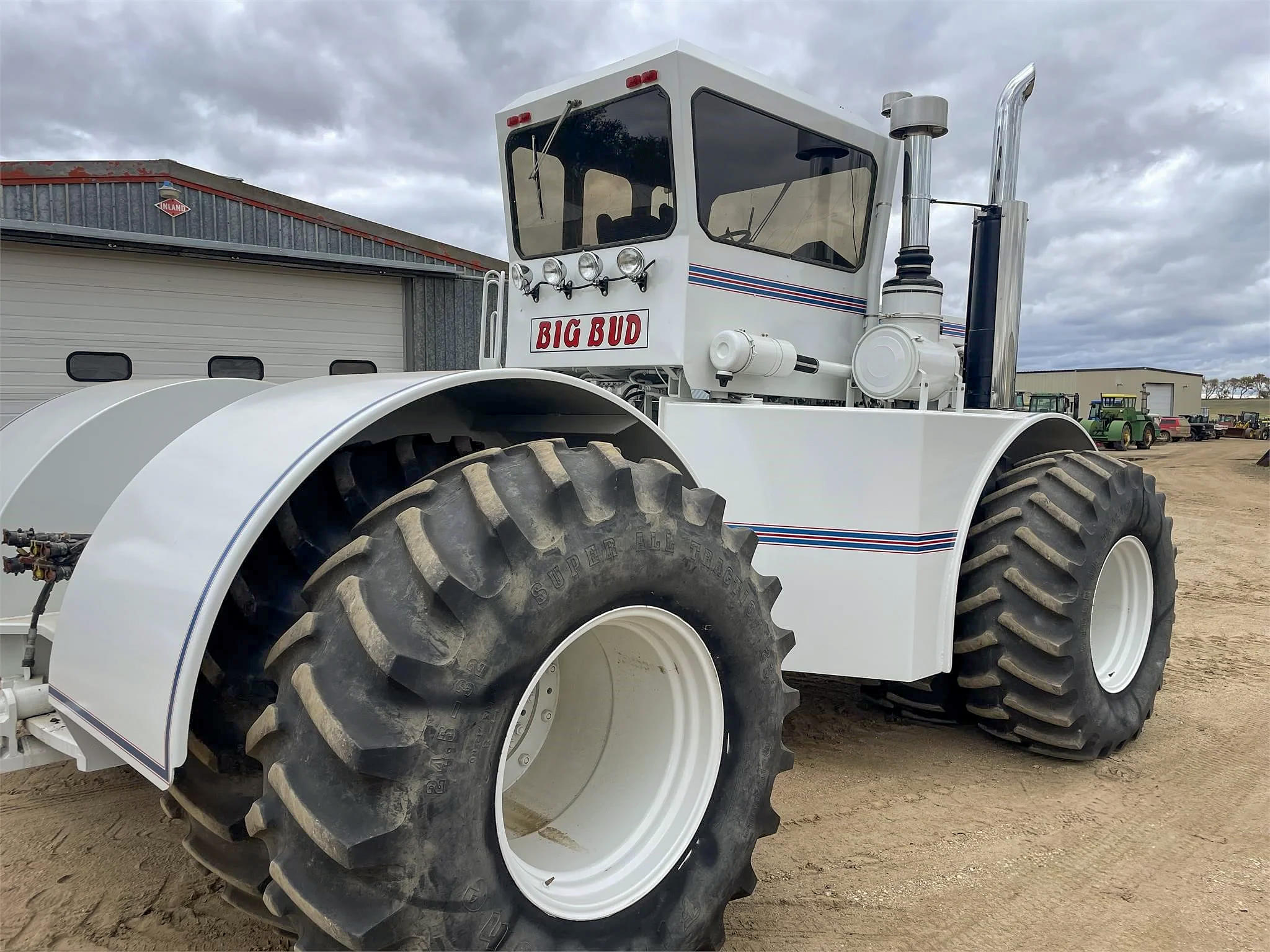
Is there anything to be concerned about?
Not really. One thing you’ll see if you’re looking carefully at the photos is that the front glass is cracked. Matt wanted me to make sure that I addressed that, too. He’s hoping that he can have that glass replaced before auction closes. I think he may be at the mercy of the glass shop on that, but I’d imagine that it’ll be done by the time the new owner comes to collect it.
That’s really the only thing wrong with the tractor. The interior is in good condition (the seat looks to be nearly brand new), the wooden dash panel is still in one piece, and the headliner is new as well. It even has the factory storage console/buddy seat!
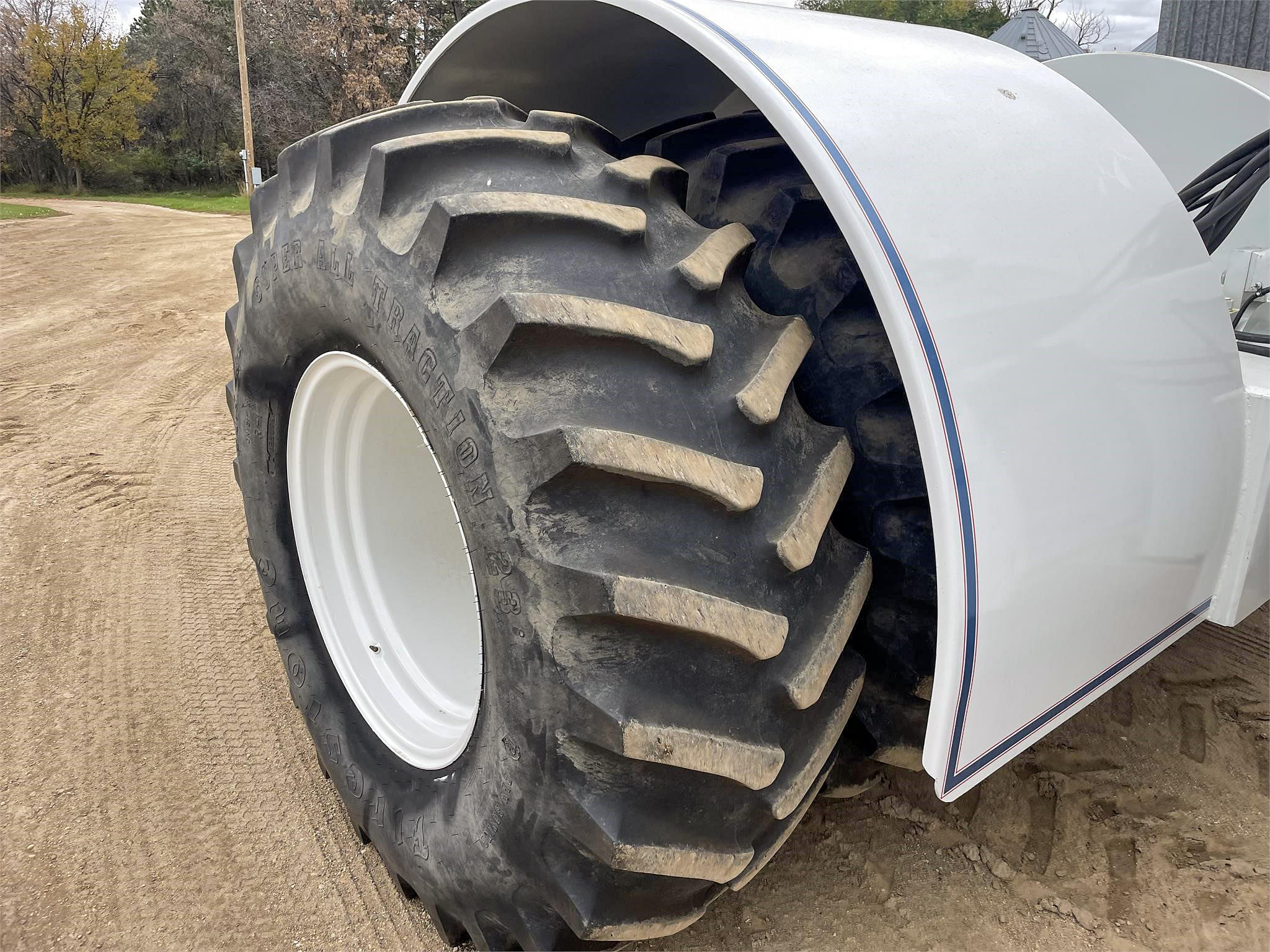
Wrapping up…
In the grand scheme of things, it’s pretty uncommon to find a Big Bud for sale these days. Part of that is due to the rarity. Between 1969-1991, the company only built 516 tractors, so there aren’t many to go around in the first place.
The other reason for that is because so many of ’em are still hard at work earning a living! Because they’re so heavily-built, they don’t really fall apart. Furthermore, with all of the mission-critical components coming from semis and heavy-haul stuff, parts and rebuild kits aren’t usually too hard to find.
That’s truly the beauty of these old 4WD tractors. They’re built to last, and they’re built to be rebuilt, y’know?
This will be the third HN-360 that the Swenson brothers have sent off to a new owner in the past two years. Matt told me that of all of these that they’ve sold, this one is the best one yet. I don’t suspect it’ll go cheap, either. I’d be awfully surprised if it didn’t get close to $90-100K. They’re not getting any easier to find, and definitely not as nice as this one is.
Personally, I hope that it ends up going to somebody who’s always dreamed of farming with one of these tractors. There’s plenty of farmers out there (and a surprising number of younger guys I’ve met) who aspire to farm with a tractor that’s twice as old as they are. I hope this one goes to one of them!
Here’s the link to the auction listing on TZ. Give it a look, even if you’re just window shopping. This really is a beautiful tractor, and it’s worth admiring for a minute.
1978 Big Bud HN360
(BTW, for the deeper dive, I’d recommend picking up Heritage Iron issue #66 where Sherry takes a look at some of the first models, and recalls an interview with “Big” Bud Nelson, one of the company’s founders!)

